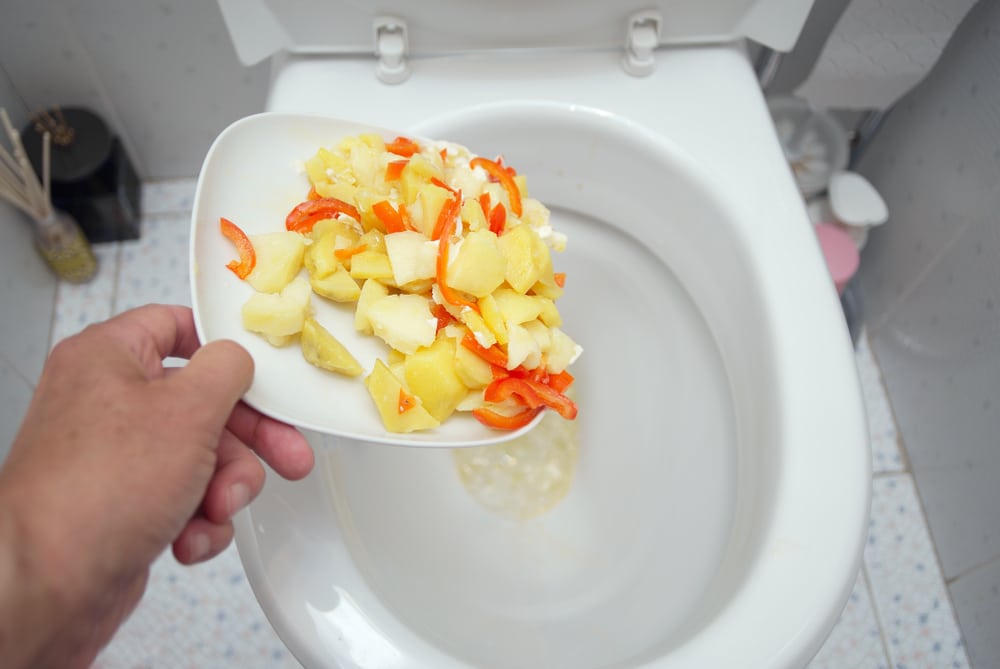Is it Safe to Dispose of Food in the Toilet?
Is it Safe to Dispose of Food in the Toilet?
Blog Article
Just how do you feel with regards to Is it safe to flush food (especially rice) down the toilet??

Introduction
Many individuals are often confronted with the dilemma of what to do with food waste, particularly when it involves leftovers or scraps. One common inquiry that emerges is whether it's alright to purge food down the bathroom. In this write-up, we'll explore the reasons why people could take into consideration flushing food, the effects of doing so, and alternate approaches for proper disposal.
Reasons individuals may think about flushing food
Lack of awareness
Some individuals may not know the prospective harm triggered by flushing food down the toilet. They may wrongly believe that it's a safe technique.
Comfort
Flushing food down the commode might appear like a quick and easy solution to taking care of undesirable scraps, specifically when there's no neighboring trash bin available.
Idleness
In many cases, individuals may just choose to flush food out of sheer laziness, without taking into consideration the consequences of their actions.
Effects of flushing food down the toilet
Environmental effect
Food waste that ends up in rivers can add to contamination and harm marine environments. Additionally, the water utilized to flush food can strain water sources.
Pipes concerns
Purging food can result in clogged up pipelines and drains, causing expensive plumbing repairs and troubles.
Types of food that should not be flushed
Fibrous foods
Foods with coarse structures such as celery or corn husks can obtain tangled in pipes and trigger clogs.
Starchy foods
Starchy foods like pasta and rice can absorb water and swell, resulting in clogs in pipes.
Oils and fats
Greasy foods like bacon or cooking oils need to never be flushed down the toilet as they can solidify and cause obstructions.
Proper disposal methods for food waste
Making use of a garbage disposal
For homes outfitted with garbage disposals, food scraps can be ground up and flushed through the plumbing system. However, not all foods are suitable for disposal in this manner.
Recycling
Particular food packaging materials can be recycled, lowering waste and minimizing environmental effect.
Composting
Composting is an eco-friendly way to take care of food waste. Organic materials can be composted and used to enhance soil for gardening.
The significance of appropriate waste administration
Reducing ecological injury
Correct waste monitoring methods, such as composting and recycling, assistance reduce pollution and maintain natural resources for future generations.
Securing plumbing systems
By avoiding the technique of flushing food down the bathroom, homeowners can protect against expensive plumbing fixings and keep the integrity of their pipes systems.
Conclusion
To conclude, while it may be alluring to purge food down the commode for ease, it is essential to recognize the possible repercussions of this action. By embracing correct waste management methods and taking care of food waste properly, people can contribute to much healthier plumbing systems and a cleaner environment for all.
FLUSH FOOD DOWN THE TOILET?
FLUSHING FOOD CAN CAUSE BLOCKED DRAINS IN YOUR HOME
All of the plumbing fixtures in your home are connected to the same sewer pipe outside of your home. This outdoor sewer pipe is responsible for transporting all the wastewater from your home to the Council sewer mains. Even small pieces of food that go down the kitchen sink can cause problems for your sewer. It should therefore be obvious that flushing larger bits of food, such as meat, risks a clog in either the toilet itself or the sewer pipes. Flushing greasy food is even more problematic because oil coagulates when it cools, coating the interior lining of your pipes.
THE TOILET IS NOT A BIN
Food isn’t the only thing that people shouldn’t be flushing down the toilet. People use the toilet to dispose of all kinds of things such as tampons, makeup wipes, dental floss, kitty litter and even underwear. Water goes to great lengths to educate residents about the high costs and stress placed on wastewater treatment systems simply from people flushing the wrong stuff down the toilet. It costs taxpayers millions of dollars each year, and homeowners thousands in blocked drain repairs.
FLUSHING FOOD IS A WASTE OF WATER
Flushing food is a waste of our most precious resource - water. In June this year Level 1 water restrictions were introduced to protect water supply from drought conditions. Much of New South Wales continues to be affected by prolonged drought with recent figures revealing up to 97 per cent of the state remains in drought. Depending on whether you have a single or dual flush toilet, every single flush uses between five and 11 litres of water. In the current climate this is a huge amount of water to be wasting on flushing food that should be placed in the bin (or better yet, the compost).
https://www.jabplumbingsolutions.com.au/blog/can-you-flush-food-down-the-toilet

I found that post on Is it safe to flush food (especially rice) down the toilet? when doing a lookup on the web. Enjoyed our article? Please share it. Help someone else locate it. Many thanks for your time. Kindly stop by our blog back soon.
Apply Now Report this page